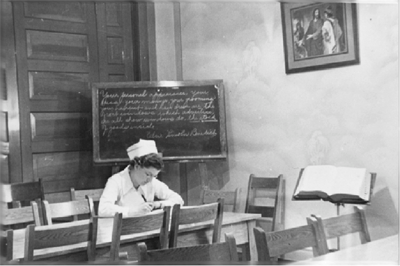Methods of Teaching and Learning
Technology in Education Column
 Here is our current installment of our most recent feature, written by one of our CNA Centennial 100 Award Winners, Dr. Sandra Bassendowski, Associate Professor at the University of Saskatchewan. Sandra recognized a need, and offered to write this important column for the CJNI – this column is focused on how technology can be used in nursing education and by nurses in general. Sandra has been recognized by the Canadian Nurses’ Association, as well as the Saskatchewan Registered Nurses Association and the University of Regina for her inspiring, dedicated work in her educational practice.
Here is our current installment of our most recent feature, written by one of our CNA Centennial 100 Award Winners, Dr. Sandra Bassendowski, Associate Professor at the University of Saskatchewan. Sandra recognized a need, and offered to write this important column for the CJNI – this column is focused on how technology can be used in nursing education and by nurses in general. Sandra has been recognized by the Canadian Nurses’ Association, as well as the Saskatchewan Registered Nurses Association and the University of Regina for her inspiring, dedicated work in her educational practice.
Methods of Teaching and Learning
This semester I taught a graduate course on “Teaching in Nursing” and one of the themes that we discussed was related to the instructional strategies, technology, and tools that are available to educators to use in classrooms, labs, and clinical. We discussed the use of software programs such as PowerPoint© and the Web 2.0 social networking tools that are accessible to educators to use to engage students and enhance learning. The list of technologies and tools is extensive and one of the phrases that I try to keep in mind as I choose tools for content delivery is “Pedagogy first, then technology” (Moore, Fowler, & Watson, 2007).
As I think about all the tools and resources that are available for teaching in nursing in 2010, I also reflect on how different this situation must be from the early years of nursing education in Canada. One of my prized possessions is a book called Survey of Nursing Education in Canada published in 1932 by Dr. George Weir. The Canadian Nurses Association and the Canadian Medical Association commissioned him to conduct a national study of nursing education. Based on the outcomes of the study, he was to provide recommendations of what could be done to improve the training of nurses.

Weir suggests in the chapter on “Methods of Teaching and Learning” that training schools “continue to live in the decadent atmosphere of apprenticeship- the imparting of mechanical nursing skills in a mechanical fashion with a few largely unrelated ‘lectures’ thrown in- and have failed to respond to the broader conception of twentieth century education (p. 316). He asks the reader to consider this question: “Are these nineteenth century methods of instruction applicable in a rapidly-moving twentieth century world” (p. 317)? In the late 1920s, very few resources existed and the teaching methods consisted largely of lectures, occasional case studies, and some problem-solving situations. Students were passive learners who focused on note taking, memorization, and the ability to sit quietly throughout the lectures. Weir mentions that the students were generally overwhelmed with the “avalanche of factual material” and often dropped behind in the note taking and then sat back with an “air of stoic resignation.” Weir (1932) discusses the concept of pedagogy in this chapter and refers to the need for educators to establish a connection with students during the presentation of content. He recommended that the “lecture method in training schools for nurses should be reduced to the minimum. Its present use might well be curtailed by at least two-thirds (p. 339).
So – how are we doing today with use of resources, selection of teaching methods, and connections/interactions with students? I believe it’s all about options and choices. What tools are critical to support the delivery of selected content? What technology and tools should students use to support their own learning? What percentage of time is committed to lectures in comparison to other methods? Rheingold (2010) suggests that “The technologies that we have in our pockets today are powerful engines for participation…if we want to discover how we can engage students as well as ourselves in the 21st century, we must move beyond skills and technologies. We must explore also the interconnected social media literacies of attention, participation, cooperation, network awareness, and critical consumption” (Interconnection, ¶2). I think that the basis of the question Weir raised in 1932 is something we should still be asking ourselves today- Are the twentieth century methods of instruction applicable in a rapidly-moving twenty-first century world?
References
Moore, A., Fowler, S., & Watson, C.E. (2007). Active learning and technology: Designing change for faculty, students, and institutions. EDUCAUSE Review, 42(5), 42-61. [Online]. Available from http://www.educause.edu/
Rheingold, H. (2010). Attention, and other 21st century social media literacies. EDUCAUSE Review, 45(5), 14-24. [Online]. Available from http://www.educause.edu/
Weir, G. (1932). Survey of nursing education in Canada. Canadian Medical Association and Canadian Nurses Association, Canada.
Photo: Available from personal files
APA CITATION
Bassendowski, S. (Fall, 2010). Methods of Teaching and Learning CJNI: Canadian Journal of Nursing Informatics, 5 (4), Technology in Education Column. https://cjni.net/journal/?p=959






